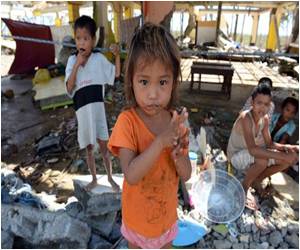Many people who suffered serious injuries when a powerful typhoon ravaged the central Philippines have had to wait nearly a month for treatment, the World Health Organization said.

Super Typhoon Haiyan destroyed some local hospitals, debris blocking access to many of those still working, when it slashed across the central islands on November 8, requiring the air evacuation of some of the injured to Manila and other cities.
The government's National Disaster Risk Reduction and Management Council now lists 26,233 people injured, which the WHO Western Pacific in Manila said were the same figures it is using.
The official figure had stood at just 12,500 in mid-November, a week after the typhoon swept out of the region.
The official death toll stands at 5,680, with 1,779 other people listed as missing.
"Hospitals in Manila and across the affected region are already treating around 20 people with spinal cord injuries, dozens with amputations and many more with serious fractures," Hall said.
Advertisement
Foreign governments and international aid organisations also put up field hospitals and other medical facilities in some of the worst-hit areas.
Advertisement
Hall warned that disasters like Haiyan can create a new generation of people with disabilities when the injured do not always have timely access to medical and rehabilitation services.
The WHO is also concerned about the welfare of those already living with disabilities prior to the disaster, who are more vulnerable in emergencies, are less able to escape from hazards, and often lose essential medications or assistive devices, Hall said.
"Items like glasses, hearing aids and wheel chairs were swept away by the storm or left behind by people trying to flee," Hall said.
"One can only imagine the terror of being caught in a storm of this magnitude and not being able to run for cover or see a path to safety."
Source-AFP









